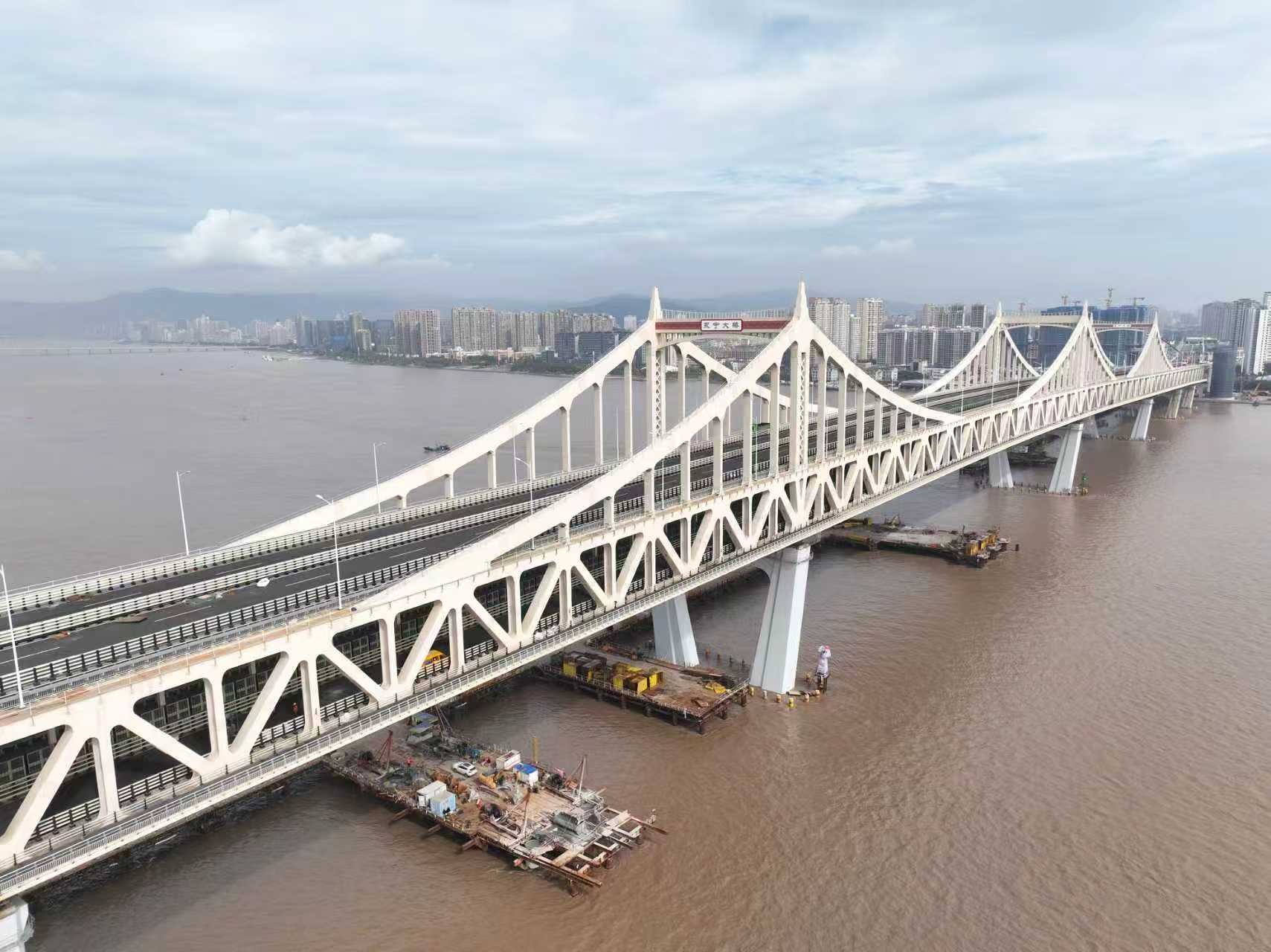
Yongning Bridge is the first "three bridges in one" double deck super large bridge in Zhejiang Province. It starts from Ruiguang Avenue on the north bank of the Yunjiang River in the north and ends near Weiwu Road on the south bank of the Feiyun River in the south, with a total length of about 3.12 kilometers, of which the river crossing area is about 1.1 kilometers. After the completion of the bridge, the upper layer is a six lane expressway, the lower layer is a track in the middle, and the two sides are first-class highway. It is a composite river crossing channel integrating urban railways, expressways, first-class highway, non motorized lanes, pedestrian channels, and other functions. It is also the largest span rigid suspension bridge with multiple towers for both public and rail purposes in China so far. The construction difficulty of this bridge ranks among the top in the country due to its five major pushing technology characteristics of "large span, large tonnage, large support reaction force, large longitudinal slope, and complex vertical curve".
The cross river main bridge of Yongning Bridge adopts a reinforced continuous steel truss structure, with a total steel consumption of 60000 tons, equivalent to the steel consumption of six Eiffel Towers. This experiment includes two parts: static load and dynamic load. During three consecutive nights of testing, a total of 180 vehicles were loaded. At its peak, 90 loading vehicles were deployed on the upper and lower bridge decks, with a total ultimate loading weight of 3600 tons.
After the completion of the project, it will become an important link in the integration of Wenzhou and Switzerland, helping the Wenzhou metropolitan area to build a comprehensive transportation corridor and a coastal functional connection axis, promoting Wenzhou's deep participation in cooperation and exchanges in the Yangtze River Delta region, continuously improving its level of internal and external opening up, and promoting the development of the marine economy in Zhejiang Province.
Correspondent: Wang Gaolin
